When the archaeological project began in 2004, there was little exposed in the potential site area except for waist-high weeds, an unruly rattlesnake, and a few stone cobbles. Teams of archaeology students over the next decade and a half tirelessly excavated the area in 5.0’ squares, one 3.0” layer at a time. They uncovered over 50,000 artifacts, five distinct activity areas, and countless insights into Harrison’s life and legend.
On the basis of the uncovered architecture and artifacts, there is no doubt that this site was Harrison’s homestead. The exposed landscape, stone structure, and numerous objects had extensive exact parallels in the historical photographs, maps, and narratives of Harrison. Furthermore, the site’s 1865-1916 artifact date-range intersection was remarkably close to Harrison’s historically documented 1873-1919 time in the immediate vicinity.
Archaeologists have identified five distinct activity areas at the site. The small cabin had fewer artifacts, but many of the items discovered from within seemed to hold special significance in terms of being complete, unique, or ornate. The cabin’s extended patio to the west was clearly a high-intensity activity area; it contained the remains of many food-processing tasks, especially animal bones. The area to the south and west of the patio was likely the primary trash dump; it teemed with cans, bottles, and other containers. An extended area to the south was his orchard and garden; it contained few artifacts but many stone-fruit pits. In addition, Harrison had an arrastra ore-grinding station 300’ south of his primary residence that was also uncovered archaeologically.
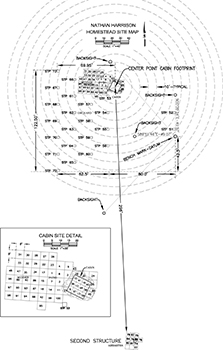
We excavate with trowels, dustpans, and buckets, and screen all of our dirt through 1/8” screens. All artifacts (human-modified materials) are saved, and soil-chemistry and soil-archive samples are collected from each unit layer at the site. Even though excavation thoroughly dismantles the site, we take copious notes, photographs, and samples in the hopes of recording all we learn and being able to reconstruct all that we have done to the site.
Archaeology is simultaneously exhilarating and meticulous. Yes, the digging is slow, the artifacts are often fragile, and every month of digging requires a year in the lab of processing, cataloging, analysis, research, and report writing. Regardless, the insights are remarkable, and the excitement of learning something new about the past based on a material discovery that has been buried for over a century is breath taking!
Since project members make a priority of engaging in public archaeology, they spend significant time and effort on archaeological open houses, public presentations, museum exhibits, and even websites. Despite this attention to the numerous communities that are stakeholders in this history, Dr. Mallios and his team also produces annual technical reports and academically oriented conference papers, journal articles, and books.
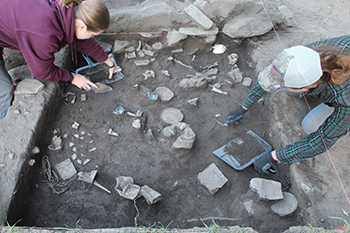
{Click on an image below to enlarge}
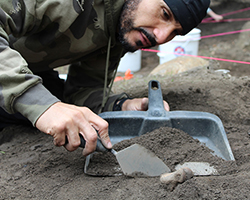
The Nathan “Nate” Harrison site hosted annual archaeological field schools from 2004-08 and from 2017-now. Students from across the nation enrolled in the San Diego State University program, which specialized in active archaeological field and laboratory methods. Participants engaged in every stage of the archaeological process, including survey, digging, screening, paperwork, mapping, sampling, cleaning, labelling, cataloging, analysis, research, report writing, and presentation.
While buzzwords for this sort of program come and go (“learning by doing,” “experiential learning,” “active engagement,” etc.), there is no substitute for a hands-on field experience. Although archaeology is not for everyone, by the end of an archaeological field school, there should be no doubt remaining as to whether one truly loves to dig.
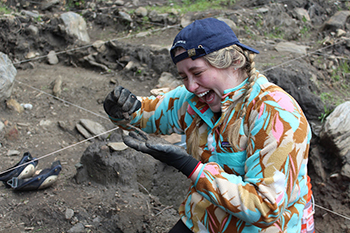
{Click on an image below to enlarge}
The media has featured the Harrison dig in multiple news stories. The following links span 15 years of excavation at the site.
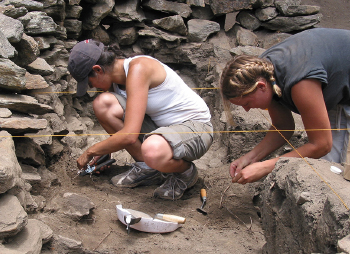
Copyright © 2023 - All Rights Reserved | Document Reader